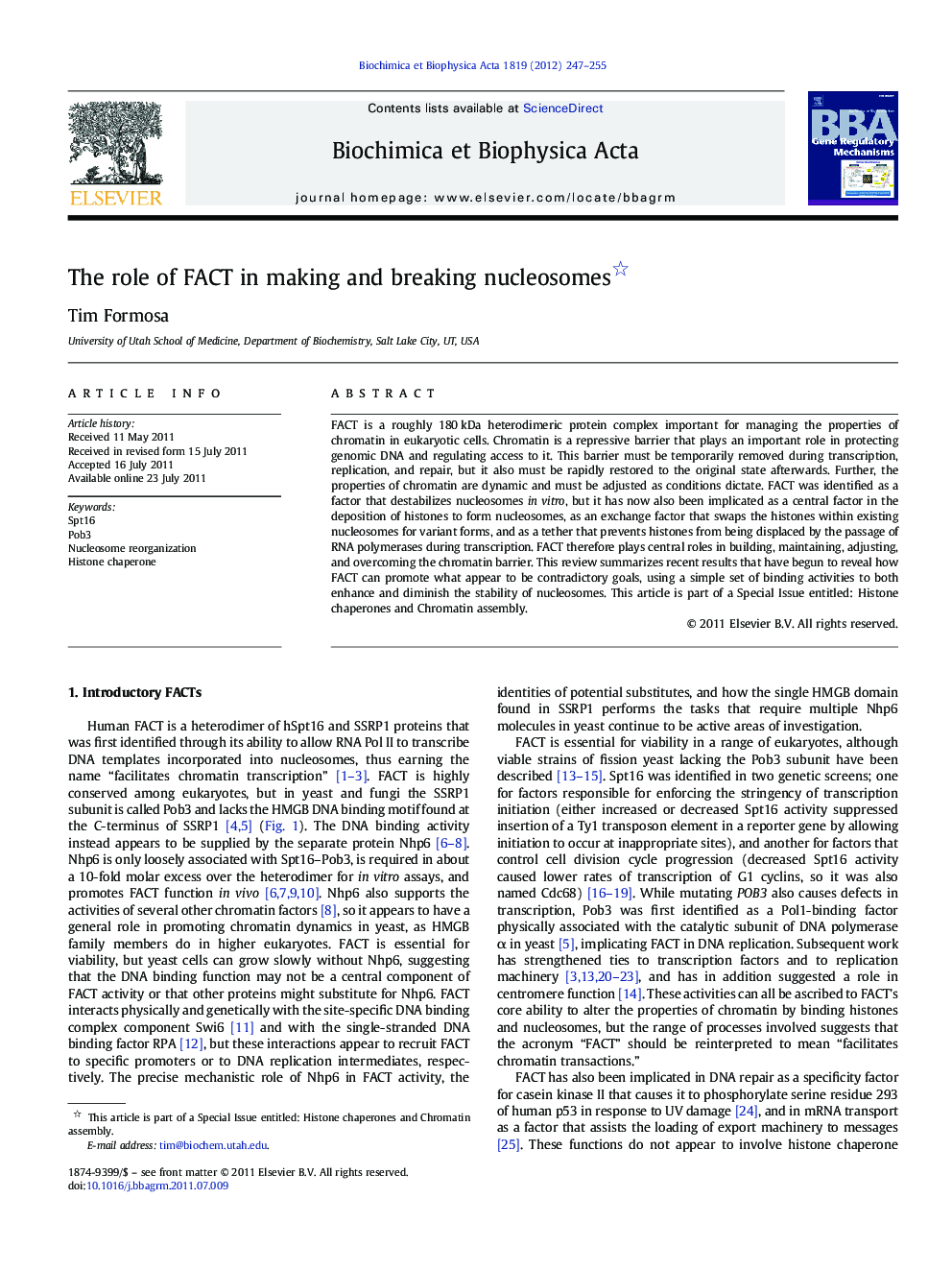| Article ID | Journal | Published Year | Pages | File Type |
|---|---|---|---|---|
| 1946530 | Biochimica et Biophysica Acta (BBA) - Gene Regulatory Mechanisms | 2012 | 9 Pages |
FACT is a roughly 180 kDa heterodimeric protein complex important for managing the properties of chromatin in eukaryotic cells. Chromatin is a repressive barrier that plays an important role in protecting genomic DNA and regulating access to it. This barrier must be temporarily removed during transcription, replication, and repair, but it also must be rapidly restored to the original state afterwards. Further, the properties of chromatin are dynamic and must be adjusted as conditions dictate. FACT was identified as a factor that destabilizes nucleosomes in vitro, but it has now also been implicated as a central factor in the deposition of histones to form nucleosomes, as an exchange factor that swaps the histones within existing nucleosomes for variant forms, and as a tether that prevents histones from being displaced by the passage of RNA polymerases during transcription. FACT therefore plays central roles in building, maintaining, adjusting, and overcoming the chromatin barrier. This review summarizes recent results that have begun to reveal how FACT can promote what appear to be contradictory goals, using a simple set of binding activities to both enhance and diminish the stability of nucleosomes. This article is part of a Special Issue entitled: Histone chaperones and Chromatin assembly.
► FACT has a modular domain organization, allowing simultaneous contact with multiple histones or other proteins. ► FACT either induces or captures a reorganized nucleosome form that is more open than the canonical structure. ► Nucleosome reorganization promotes initiation and elongation of transcription and replication. ► FACT can destabilize nucleosomes but it also tethers the components together for reassembly, promoting nucleosome stability. ► FACT may have a central role in de novo nucleosome assembly during DNA replication.
